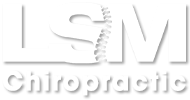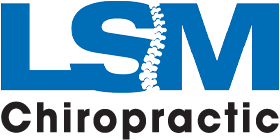Three Types of Headaches

Did you know headaches affect more than half of the population? There are various types of headaches and recognizing their distinct features can help you and your doctor determine the best treatment strategy. Below are three of the most common varieties of headaches and a suggestion for treating headaches and migraines.
Migraine Headaches
Migraine headaches are normally described as throbbing or pulsing. The pain is typically moderate to severe and worsens with physical activity. Other symptoms include nausea and sensitivity to light, sound, or smells. These types of headaches can last between a couple of hours and three days. Check out this infographic that details migraine headaches!
Neck Tension Headaches (Cervicogenic)
Approximately one in five headaches arises from a problem in the neck and is classified as neck tension or "cervicogenic headaches." Cervicogenic headaches are most commonly one-sided, but occasionally may be present on both sides of the head. Pain often radiates from the base of your skull toward the top of your head and sometimes over your eyes. And, as the name implies, neck tightness is frequently present.
Cluster Headaches
Cluster headaches are by far the least common of these three and occur in a cluster or on one side of the head. This pain is typically stabbing or piercing. These types of headaches only last between 10 minutes to 3 hours and laying down often worsens the pain. Other symptoms include watering of the eye and nasal congestion on the side of the headache. Cluster headaches are often triggered by alcohol.
Trigger of Headache and Migraine Pain
A common trigger for migraine and neck tension headaches is limited movement of the joints in your upper cervical spine. Normally, each of the joints in your neck moves freely and independently. Sometimes, restrictions in the upper cervical spine initiate a painful cycle of stiffness, muscle tightness, and joint inflammation. This may cause irritation to the sensitive nerves leading from your neck into the back of your head.
Natural Relief From Headaches
Now that you know a little more about the different types of headaches, you may be able to figure out which type is leaving you in pain. Chiropractic care is proven method of treating migraine pain and treating headache pain naturally, without pills or medication. Our doctors of chiropractic can perform a gental and safe spinal manipulation (aka chiropractic adjustment) which can help you find relief from migraine pain or relief from headache pain.
The information, including but not limited to, text, graphics, images and other material contained on this page are for informational purposes only. The purpose of this post is to promote broad consumer understanding and knowledge of various health topics, including but not limited to the benefits of chiropractic care, exercise and nutrition. It is not intended to provide or be a substitute for professional medical advice, diagnosis or treatment. Always seek the advice of your chiropractor, physician or other qualified health care provider with any questions you may have regarding a medical condition or treatment and before undertaking a new health care regimen, and never disregard professional medical advice or delay in seeking it because of something you have read on this page.




